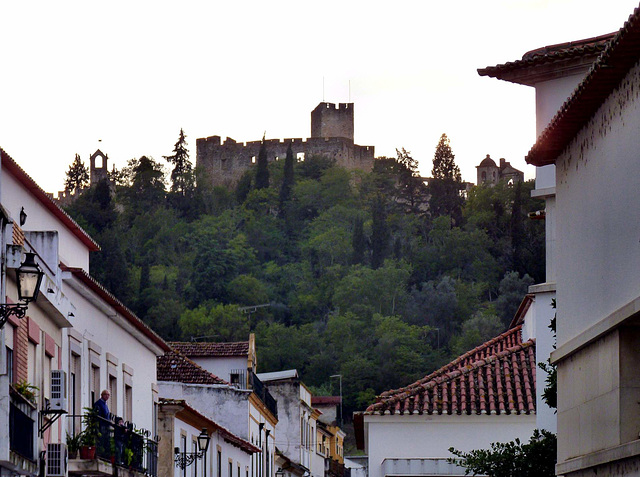Tomar - Convento de Cristo
Tomar - Convento de Cristo
Tomar - Convento de Cristo
Tomar - Convento de Cristo
Tomar - Convento de Cristo
Tomar - Convento de Cristo
Tomar - Convento de Cristo
Tomar - Convento de Cristo
Tomar - Convento de Cristo
Tomar - Convento de Cristo
Tomar - Convento de Cristo
Tomar - Convento de Cristo
Tomar - Convento de Cristo
Tarifa - Mosquito Cocktail Bar
Tarifa - Tejidos trujillo
Tarifa - Tarifa Kebab
Tarifa - San Francisco
Tarifa - Plaza de Santa María
Tarifa - Puerta de Jerez
Tarifa - Africa
Tarifa - Car park
Cádiz
Cádiz - Catedral de la Santa Cruz de Cádiz
Cádiz - Catedral de la Santa Cruz de Cádiz
Cádiz - Catedral de la Santa Cruz de Cádiz
Cádiz - Catedral de la Santa Cruz de Cádiz
Cádiz - Campo Del Sur
Ronda
Ronda - Parador
Ronda - Parador
Ronda - Tajo de Ronda
Ronda
Ronda
Tomar - São João Batista
Barcelos - Mosteiro de Vilar de Frades
Barcelos - Mosteiro de Vilar de Frades
Barcelos - Mosteiro de Vilar de Frades
Barcelos - Mosteiro de Vilar de Frades
Barcelos - Mosteiro de Vilar de Frades
Barcelos - Mosteiro de Vilar de Frades
Castillo de Loarre
Soto de Bureba - San Andrés
Soto de Bureba - San Andrés
Huesca - Catedral de Santa Maria
Huesca - Catedral de Santa Maria
Huesca - Catedral de Santa Maria
Huesca - Catedral de Santa Maria
Huesca - Catedral de Santa Maria
Huesca - Catedral de Santa Maria
Huesca - Catedral de Santa Maria
Huesca - Catedral de Santa Maria
Huesca - Catedral de Santa Maria
Huesca - Catedral de Santa Maria
Huesca - Catedral de Santa Maria
Huesca - Catedral de Santa Maria
Artaiz - San Martin
Artaiz - San Martin
Artaiz - San Martin
Artaiz - San Martin
Artaiz - San Martin
Artaiz - San Martin
Artaiz - San Martin
Artaiz - San Martin
Artaiz - San Martin
Artaiz - San Martin
Location
Lat, Lng:
Lat, Lng:
You can copy the above to your favourite mapping app.
Address: unknown
Lat, Lng:
You can copy the above to your favourite mapping app.
Address: unknown
See also...
Keywords
Authorizations, license
-
Visible by: Everyone -
All rights reserved
-
126 visits
Tomar - Convento de Cristo


Tomar today is a modern city with a population of about 40.000.
After the conquest of the area from the Moors by Portugal´s first king Afonso Henriques in 1147, the land was granted in 1159 as a fief to the Order of the Knights Templar, who erected the castle/monastery "Convento de Cristo" here, that later became the headquarters of the Order in Portugal.
Gualdim Pais, Grand Master of the Order, granted priviliges to the evolving town already in 1162. After the Order of the Knights Templar was suppressed in 1314 King Dinis was able to transfer the possessions and personnel of the Order in Portugal to a newly created Order of Christ. In the 15th century Henry the Navigator was made the Governor of the Order. He was the central figure in the early days of the European maritime discoveries and maritime expansion, later known as the "Age of Discovery", and he may have used resources and knowledge of the Order to succeed in his enterprises in Africa and in the Atlantic.
In 1492 the Jews were expelled from Spain. Many refugees settled in Tomar, what helped the town to develop. Jews lived here undisturbed for several decades until the Portuguese Inquisition got installed. Many could escape by migrating, but about 1000 were tortured and executed.
Tomar was occupied by the French during the Napoleonic invasions and was liberated by Portuguese and English troops commanded by the Duke of Wellington.
The "Convento de Cristo" towers over Tomar. The fortification was already end of the 12th century strong enough to resist the army of caliph Abu Yusuf al-Mansur.
After the conquest of the area from the Moors by Portugal´s first king Afonso Henriques in 1147, the land was granted in 1159 as a fief to the Order of the Knights Templar, who erected the castle/monastery "Convento de Cristo" here, that later became the headquarters of the Order in Portugal.
Gualdim Pais, Grand Master of the Order, granted priviliges to the evolving town already in 1162. After the Order of the Knights Templar was suppressed in 1314 King Dinis was able to transfer the possessions and personnel of the Order in Portugal to a newly created Order of Christ. In the 15th century Henry the Navigator was made the Governor of the Order. He was the central figure in the early days of the European maritime discoveries and maritime expansion, later known as the "Age of Discovery", and he may have used resources and knowledge of the Order to succeed in his enterprises in Africa and in the Atlantic.
In 1492 the Jews were expelled from Spain. Many refugees settled in Tomar, what helped the town to develop. Jews lived here undisturbed for several decades until the Portuguese Inquisition got installed. Many could escape by migrating, but about 1000 were tortured and executed.
Tomar was occupied by the French during the Napoleonic invasions and was liberated by Portuguese and English troops commanded by the Duke of Wellington.
The "Convento de Cristo" towers over Tomar. The fortification was already end of the 12th century strong enough to resist the army of caliph Abu Yusuf al-Mansur.
- Keyboard shortcuts:
Jump to top
RSS feed- Latest comments - Subscribe to the comment feeds of this photo
- ipernity © 2007-2024
- Help & Contact
|
Club news
|
About ipernity
|
History |
ipernity Club & Prices |
Guide of good conduct
Donate | Group guidelines | Privacy policy | Terms of use | Statutes | In memoria -
Facebook
Twitter

Sign-in to write a comment.